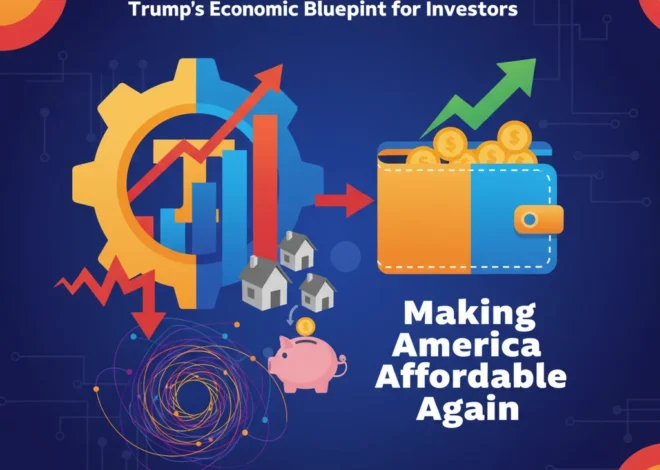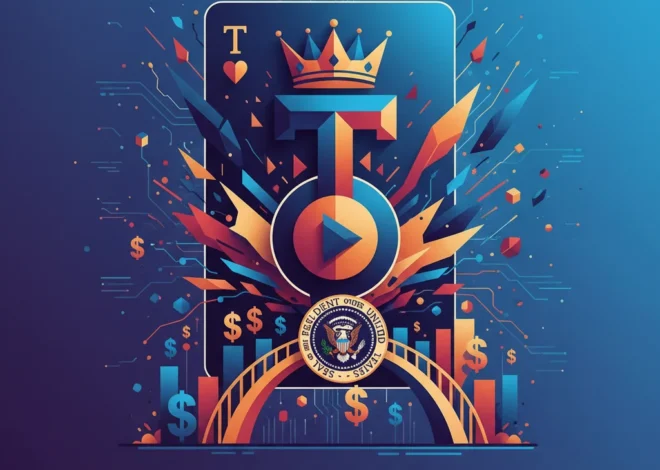
From Red Ink to AI: Decoding the Tony Blair Institute’s High-Stakes Strategic Overhaul
In the high-stakes world of global advisory, where influence is the currency and policy is the product, even the most prominent names are not immune to the unforgiving laws of finance. The Tony Blair Institute for Global Change (TBI), a unique hybrid of a think-tank and a hands-on government consultancy founded by the former UK Prime Minister, finds itself at a critical crossroads. Faced with mounting financial losses, the organization is undertaking a significant restructuring, betting its future on the transformative power of artificial intelligence. This strategic pivot is more than just a corporate reshuffle; it’s a fascinating case study in non-profit finance, the economics of influence, and the relentless gravitational pull of the modern tech economy.
The Financial Reality: A Look Beneath the Hood
To understand the “why” behind TBI’s strategic shift, one must first grasp the “how much.” Recent financial disclosures paint a challenging picture. The institute’s main commercial entity, Tony Blair Associates, reported a pre-tax loss of £12.7 million for the year 2022. This figure is particularly stark when compared to the modest £129,000 profit from the previous year, signaling a significant deterioration in its financial health.
This deficit occurred despite a healthy increase in turnover, which rose to £80 million. The primary driver of the losses appears to be a rapid expansion in operational scale. The institute’s global headcount surged by an astonishing 45 percent in a single year, growing to over 850 employees. This aggressive growth strategy, while ambitious, has clearly strained its financial resources, creating a classic burn rate problem that would set off alarm bells in any venture capital-backed startup, let alone a non-profit reliant on donor funding.
Here’s a simplified breakdown of the financial situation, illustrating the pressures TBI is facing:
| Financial Metric (2022) | Key Figure | Implication for the Institute |
|---|---|---|
| Pre-Tax Loss | £12.7 Million | Significant operational deficit, indicating expenses far outstripped income. |
| Turnover | £80 Million | Strong revenue generation, but insufficient to cover escalating costs. |
| Staff Growth | 45% Increase (to 850+) | Rapid scaling of human capital, leading to a massive increase in payroll and operational expenses. |
| Net Liabilities | £10.8 Million | The institute’s liabilities exceed its assets, a precarious position for long-term stability. |
This financial backdrop is the catalyst for the current restructuring. The institute is now actively seeking new, long-term donors to shore up its balance sheet and fund its ambitious future, a future it believes is inextricably linked with artificial intelligence.
North American Trade Shift: Why New US Tariff Relief on Trucks is a Major Signal for Investors
The AI Gambit: A Strategic Pivot to Secure the Future
In response to these financial headwinds, TBI is not just trimming costs; it’s fundamentally reorienting its mission around what it calls the “new progressive agenda”—with technology, and specifically AI, at its core. This isn’t a minor tweak to their existing advisory services; it’s a full-throated embrace of the AI revolution as the central pillar of their value proposition to the governments they advise.
The strategy is twofold:
- Internal Integration: TBI is embedding AI expertise across all its advisory teams, from healthcare to economics. The goal is to ensure that every policy recommendation is informed by the potential of modern financial technology and data science. This moves AI from a niche topic to the foundational grammar of all their work.
- External Advocacy: The institute aims to position itself as the world’s leading advisor to political leaders on harnessing AI for public good. This involves helping governments navigate the complexities of digital transformation, from building secure digital ID systems to leveraging AI for more efficient public services, which has profound implications for the future of the global economy and banking infrastructure.
This pivot is strategically astute. It aligns TBI with one of the most powerful and well-funded trends in the global economy. Donors and governments alike are captivated by the promise of AI. By becoming a thought leader in this space, TBI can attract a new class of philanthropists and partners, particularly from the tech sector. Indeed, the institute has already benefited from a multi-year partnership with the software giant Oracle, a clear signal of this new direction. This is a calculated move to diversify its funding base away from traditional philanthropic sources and towards the deep pockets of big tech.
The Business of Influence: A Non-Profit with For-Profit Ambitions
The Tony Blair Institute operates a unique model. While registered as a non-profit, its operational structure, global reach, and high-level advisory work mirror that of elite private-sector consulting firms like McKinsey or Boston Consulting Group. It advises heads of state and senior ministers in over 30 countries on strategy, policy, and delivery.
This model allows for immense potential impact but also creates inherent financial fragility. Unlike a for-profit consultancy that can build a diverse client base and charge premium fees, TBI relies on a relatively small number of large donors and government partnerships. This makes its revenue streams less predictable and more vulnerable to shifts in donor priorities or political winds. The current financial strain is a direct consequence of this structural reality. The cost of maintaining a global network of elite advisors is immense, and without the consistent, high-margin revenue of commercial contracts, the model requires constant, large-scale fundraising.
For those interested in finance and investing, TBI’s situation is a compelling case study in organizational strategy. It highlights the challenges of scaling a mission-driven organization. The decision to invest heavily in human capital ahead of securing commensurate revenue is a high-risk, high-reward strategy familiar to the world of startups. Now, TBI must prove to its stakeholders and potential new donors that its bet on AI can generate a sustainable “return on influence” and secure its long-term financial viability.
Navigating the Storm: Why a Scuttled Emissions Deal Creates a Trillion-Dollar Crossroad for Global Finance
Implications for the Global Economy and Financial Technology
Why should business leaders and finance professionals pay attention to the restructuring of a non-profit? Because the advice TBI gives to governments today can shape the regulatory and economic landscapes of tomorrow.
As TBI doubles down on AI and fintech, it is likely to advocate for policies such as:
- Digital Identity Frameworks: Foundational for modernizing everything from banking services to tax collection.
- AI in Public Finance: Using predictive analytics for economic forecasting, tax fraud detection, and optimizing government spending.
- Central Bank Digital Currencies (CBDCs): Advising governments on the strategic implications of digital currencies, a topic with massive consequences for the entire banking sector and the future of trading.
- Regulatory Sandboxes for Fintech: Creating environments where financial technology innovations can be tested, potentially accelerating disruption in the stock market and investment sectors.
The policy choices made in these areas will create enormous opportunities and challenges for businesses. A government that embraces a TBI-advised digital transformation agenda could leapfrog others in economic efficiency, but it could also create new compliance burdens or disrupt incumbent industries. Therefore, understanding the ideological and strategic direction of influential advisory groups like TBI is a crucial part of strategic forecasting for any leader in finance or technology.
Déjà Vu or a Different Devil? Unpacking the New Wave of US Banking Jitters
Conclusion: A Defining Moment for a Political Legacy
The Tony Blair Institute stands at a pivotal moment. Its financial losses have forced a moment of reckoning, compelling a bold and risky pivot to the heart of the 21st-century economy: artificial intelligence. This move is a pragmatic response to financial pressures and a visionary bet on the future of governance.
Success will depend on TBI’s ability to navigate the immense complexities of its chosen path. It must secure new, sustainable funding, deliver tangible value to the governments it serves, and provide wise, ethically-grounded counsel on a technology that is as perilous as it is promising. For investors, economists, and business leaders, the evolution of the Tony Blair Institute is more than an internal drama; it is a bellwether for the merging of politics, technology, and finance, and a preview of the forces that will shape the global economy for decades to come.


